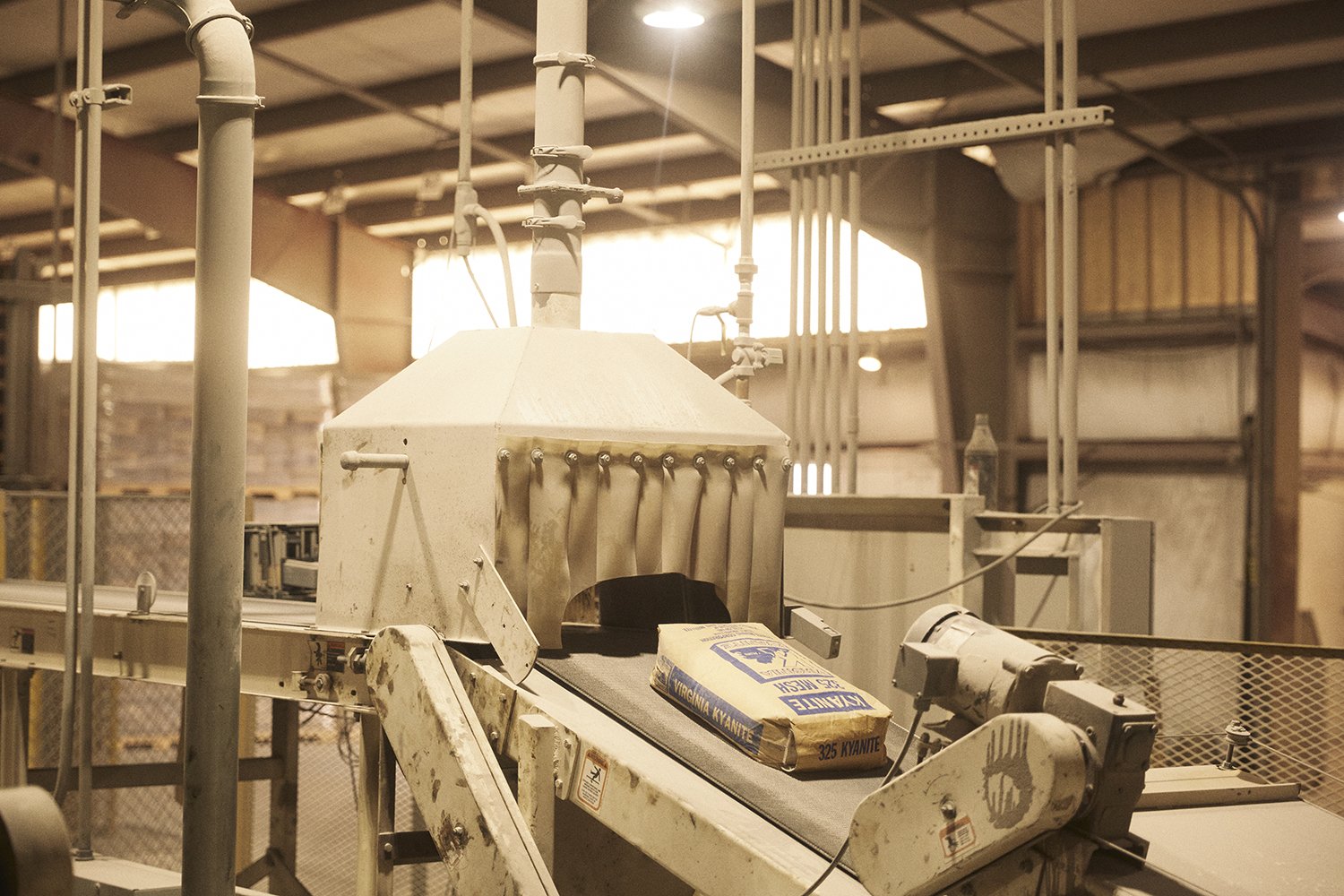Application Field: Shrinkage Control for Refractories and Ceramics
You asked, and we listened! In our 2024 survey, many of you expressed interest in learning more about the applications of kyanite in the refractory and ceramics industries. So, to kick off 2025, we’re diving into the leading use of kyanite worldwide—shrinkage control!
Why Is Shrinkage Control So Important?
If you’re in the refractory or ceramics business, you know the stakes are high when it comes to managing shrinkage. Refractories, made from clays, minerals, and cement, are built to hold molten metals in place in casts, molds, and coatings for industrial processing equipment used in modern manufacturing. When heated, some of these materials lose chemically-trapped water, causing them to shrink. Shrinkage can cause cracks to form, leading to catastrophic failures like molten metal leakage.
This is where kyanite comes in…
How It Works
Kyanite belongs to the sillimanite group of minerals, boasting a medium-high alumina content (roughly 60%) and an impressive ability to expand when heated. Among the three commercially important sillimanite minerals used in refractories—kyanite, andalusite, and sillimanite—kyanite stands out for its significant expansion at the lowest conversion temperature, making it the preferred choice for minimizing shrinkage in refractory mixes.
Here’s what happens:
When heated, kyanite converts to mullite and expands.
This expansion counteracts the shrinkage of other materials in the refractory mix, keeping structures stable.
Once expanded, it stays that way—just like popcorn after it’s popped!
Think of it like this: Imagine a furnace made of bricks with an arched roof. As the bricks heat up, they start to shrink, and eventually, the roof could collapse. Adding kyanite ensures that the shrinkage is offset by expansion, keeping the structure intact.
Getting the Mix Just Right
While kyanite has become the gold standard for shrinkage control in refractories and ceramics, getting the proportions of your refractory mix just right is key. Typically, we recommend 4–8% kyanite in a refractory mix, but the exact amount depends on your specific materials, temperatures, and application. Too much kyanite can cause over-expansion (and cracks), while too little won’t offset shrinkage enough—achieving the “Goldilocks” recipe that is ‘just right’ is no easy feat!
The good news? We’re here to help!
At Kyanite Mining Corporation, we’re known not only for the exceptional purity and quality of Virginia Kyanite but also for our top-tier technical expertise and R&D. We've invested heavily in bringing together industry-leading experts and cutting-edge technology to deliver unmatched customer service and support. Together, we’ll develop the perfect refractory recipe tailored to your unique needs. And rest assured, your formula is always kept confidential.
Ready to Optimize Your Refractory Mix?
Curious about other application fields or fine-tuning your refractory recipe? Reach out to our team today and discover why Virginia Kyanite is trusted by industry leaders worldwide:
sales@kyanite.com | +1 (434) 983-2043
Stay tuned for next month’s segment, where we’ll explore how kyanite enhances density control in refractory mixes!


